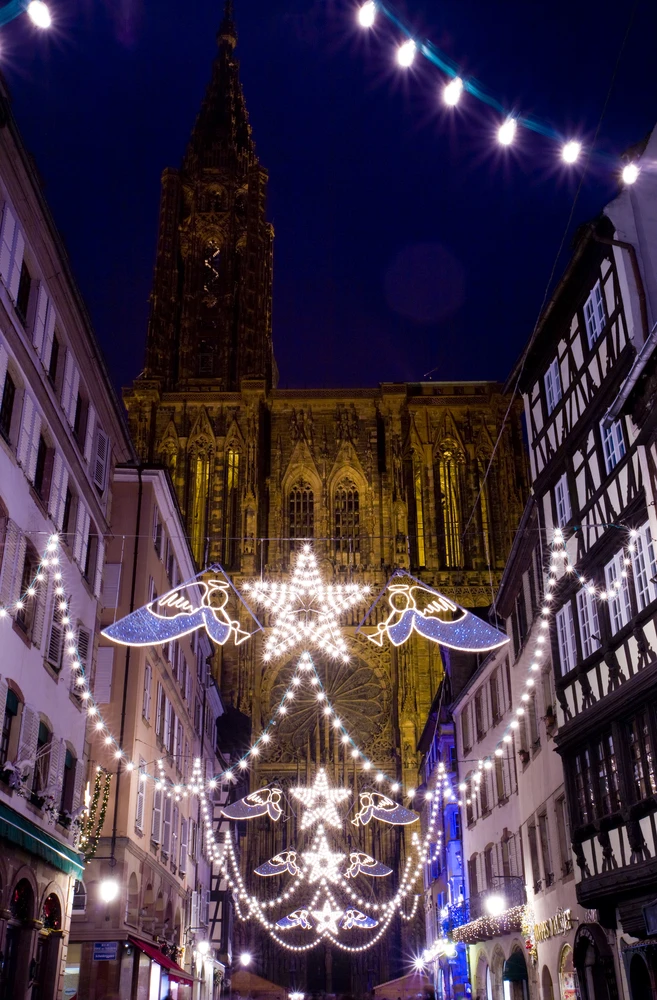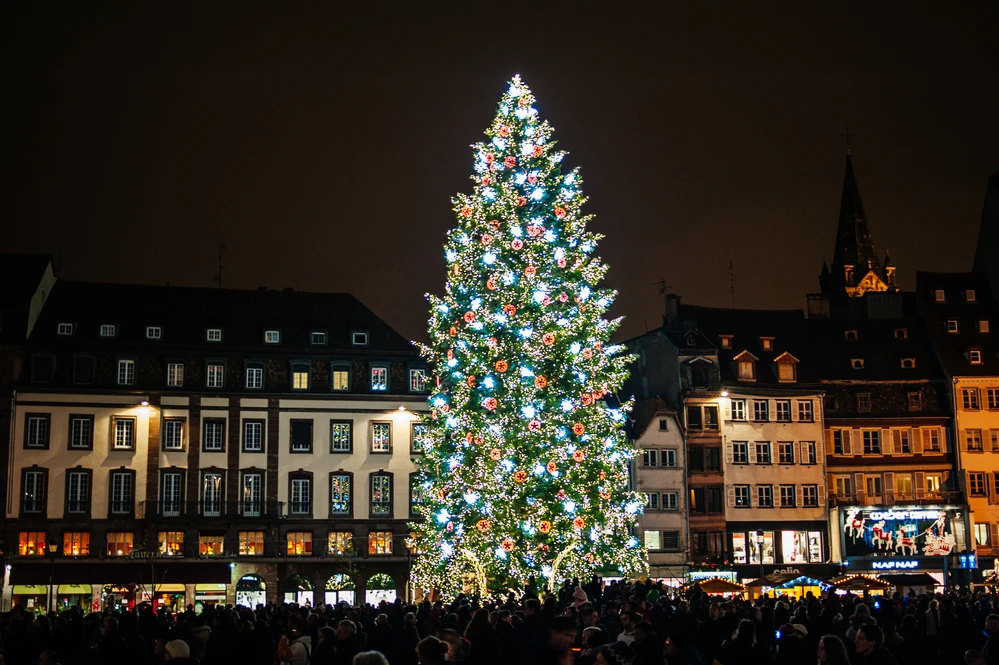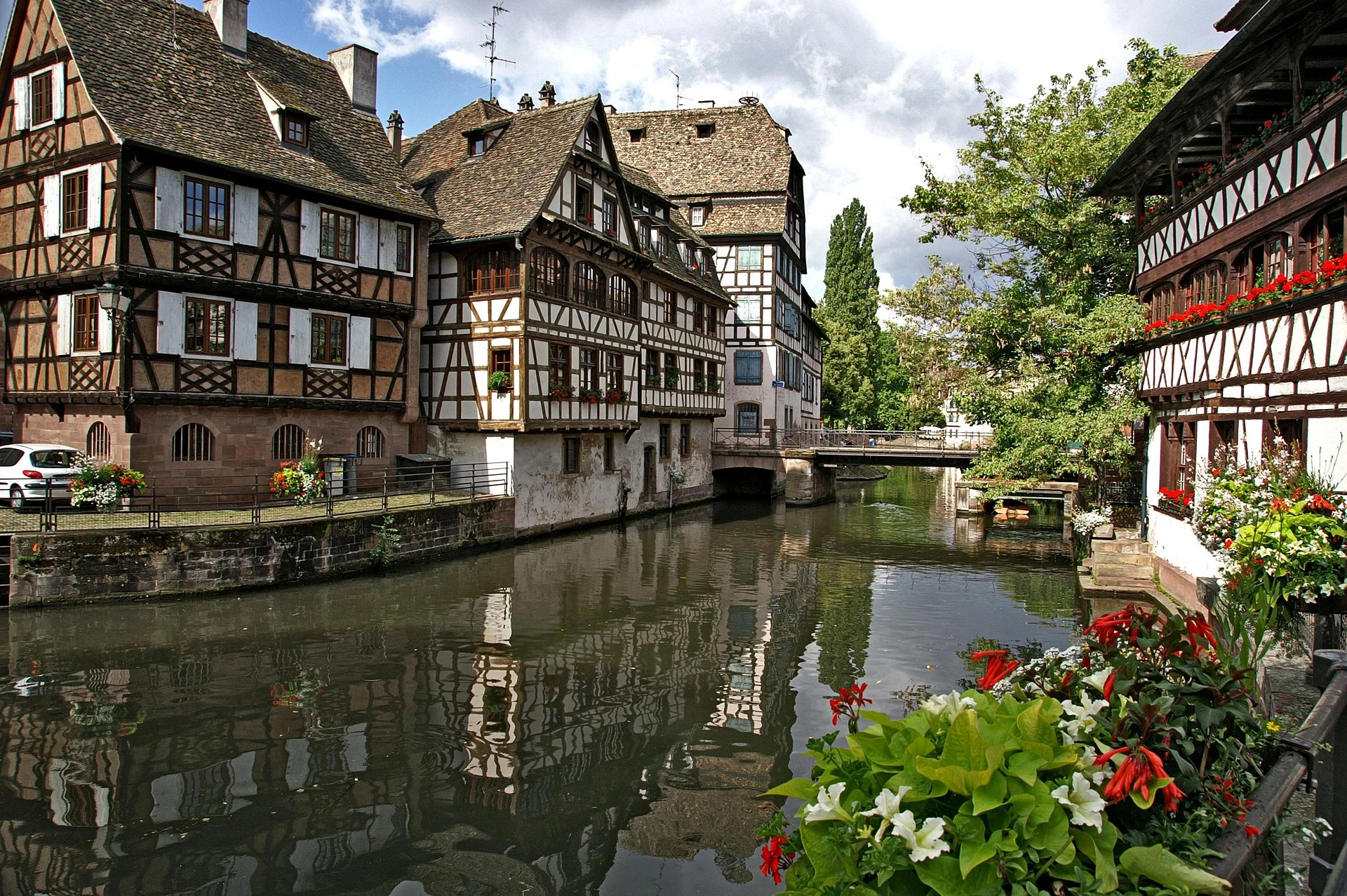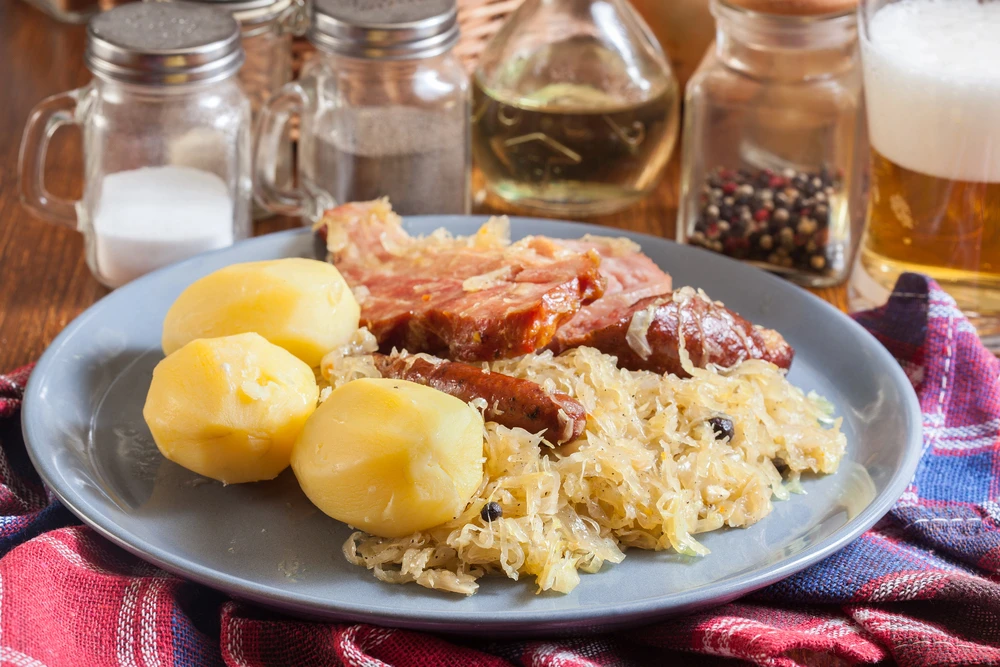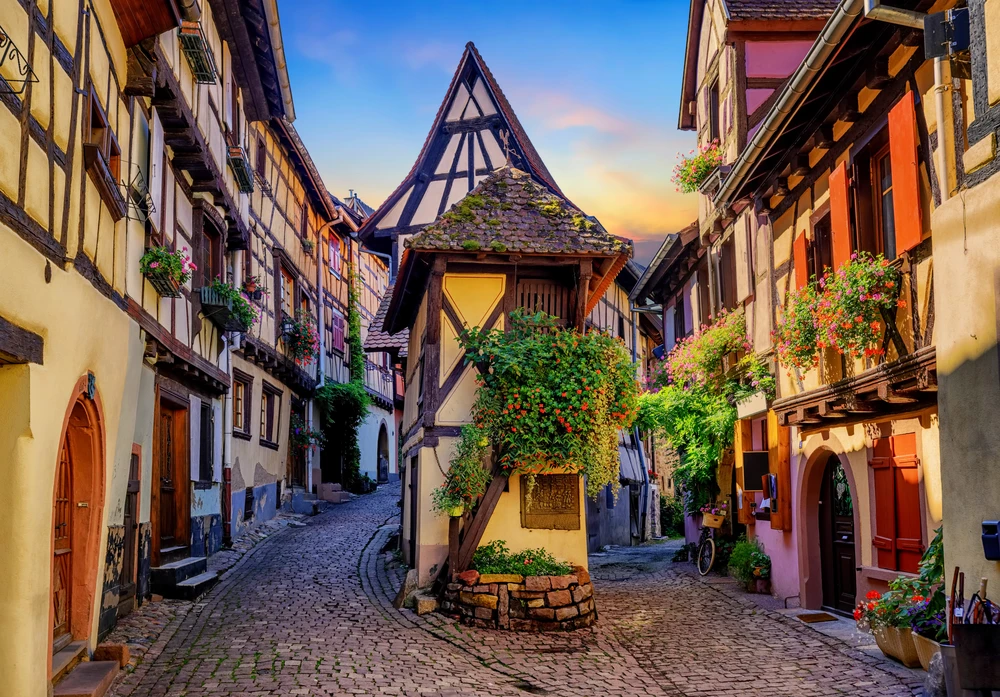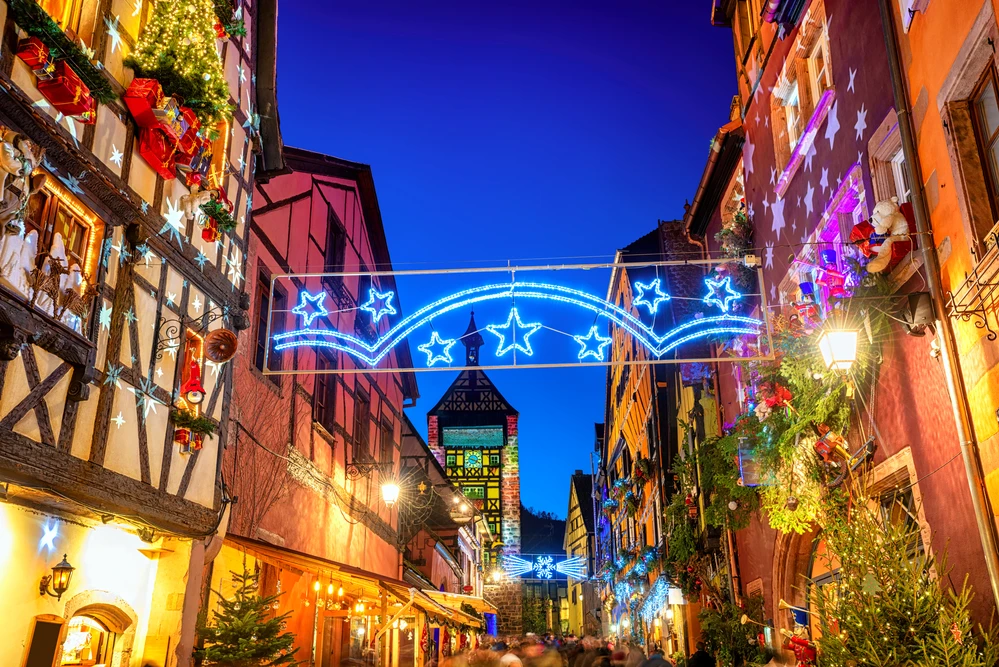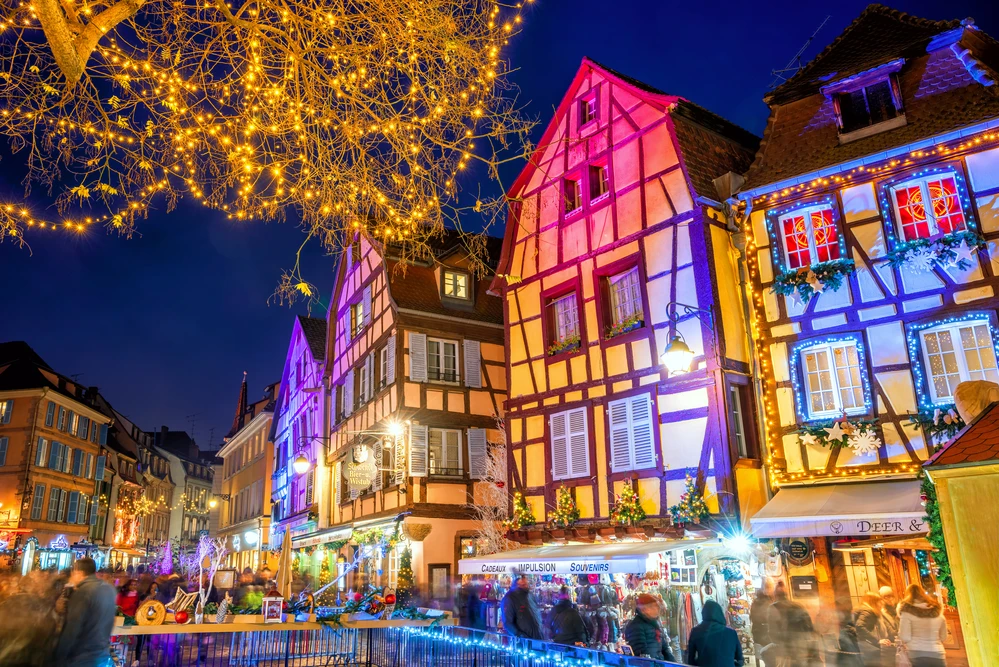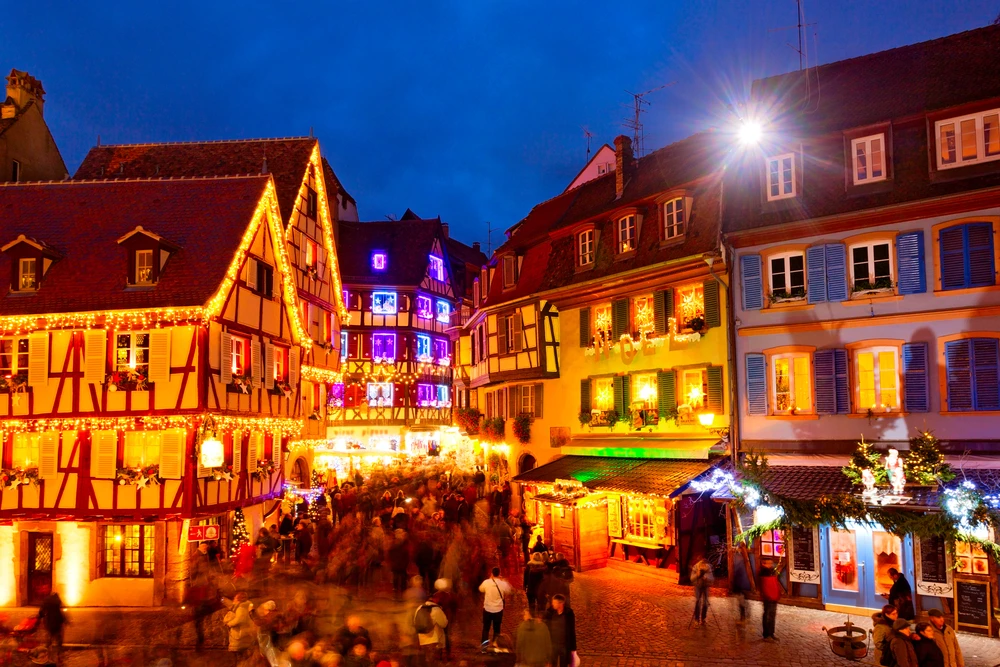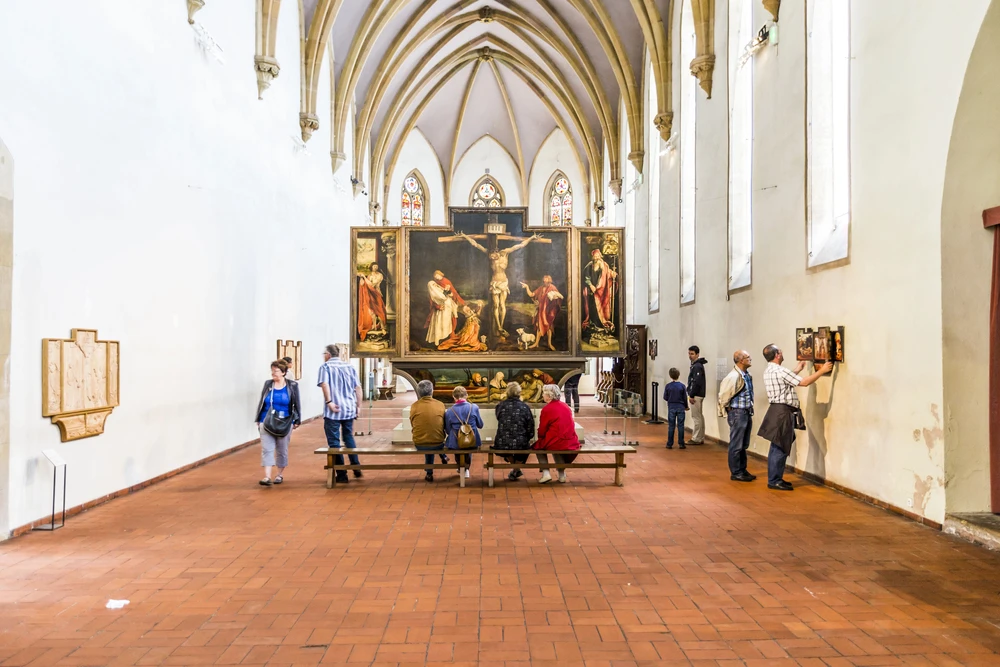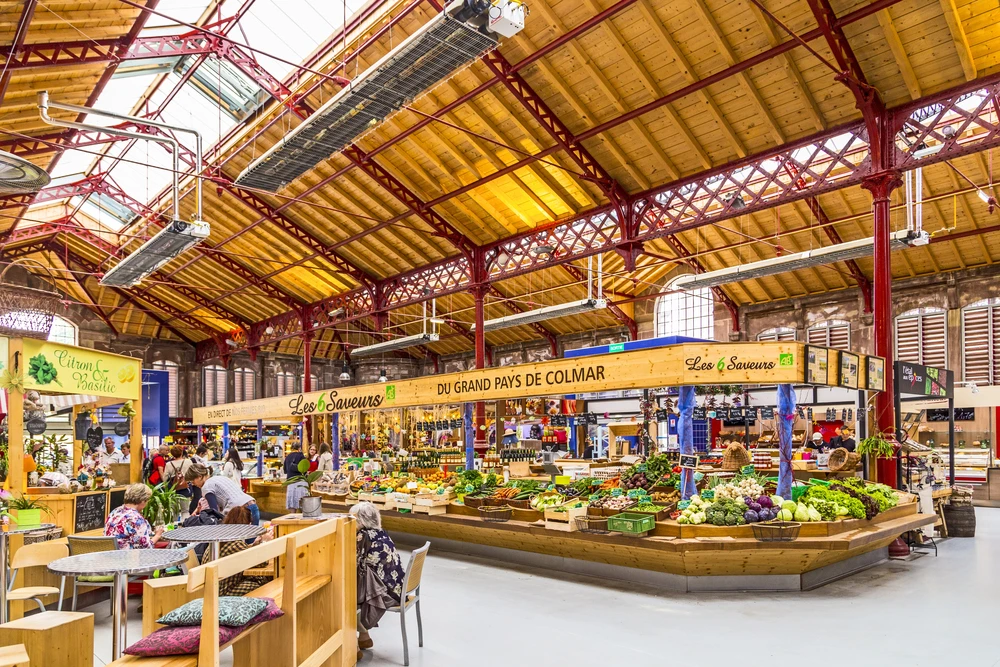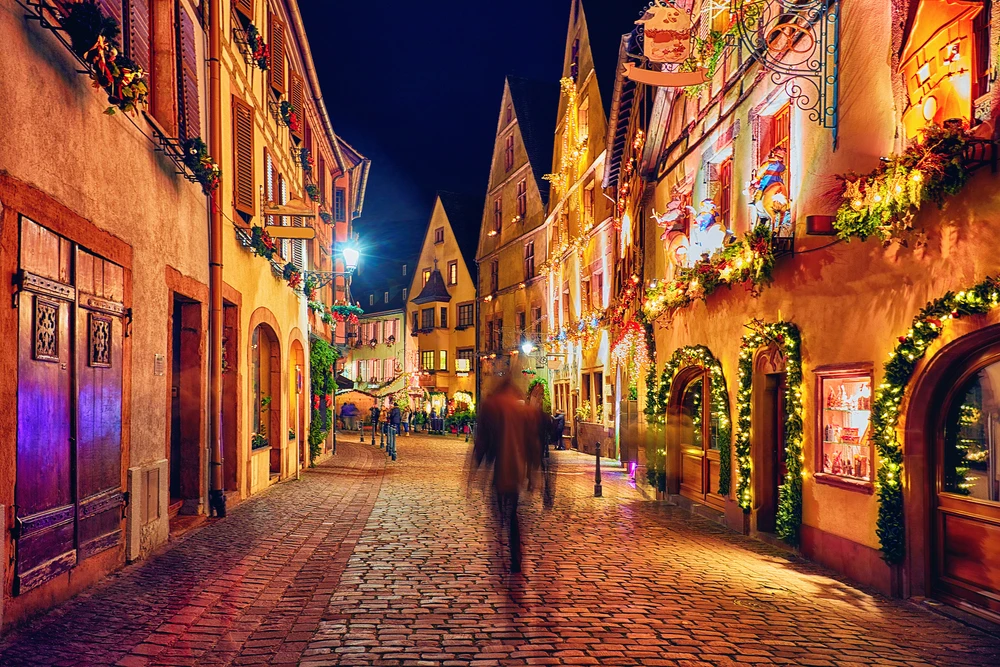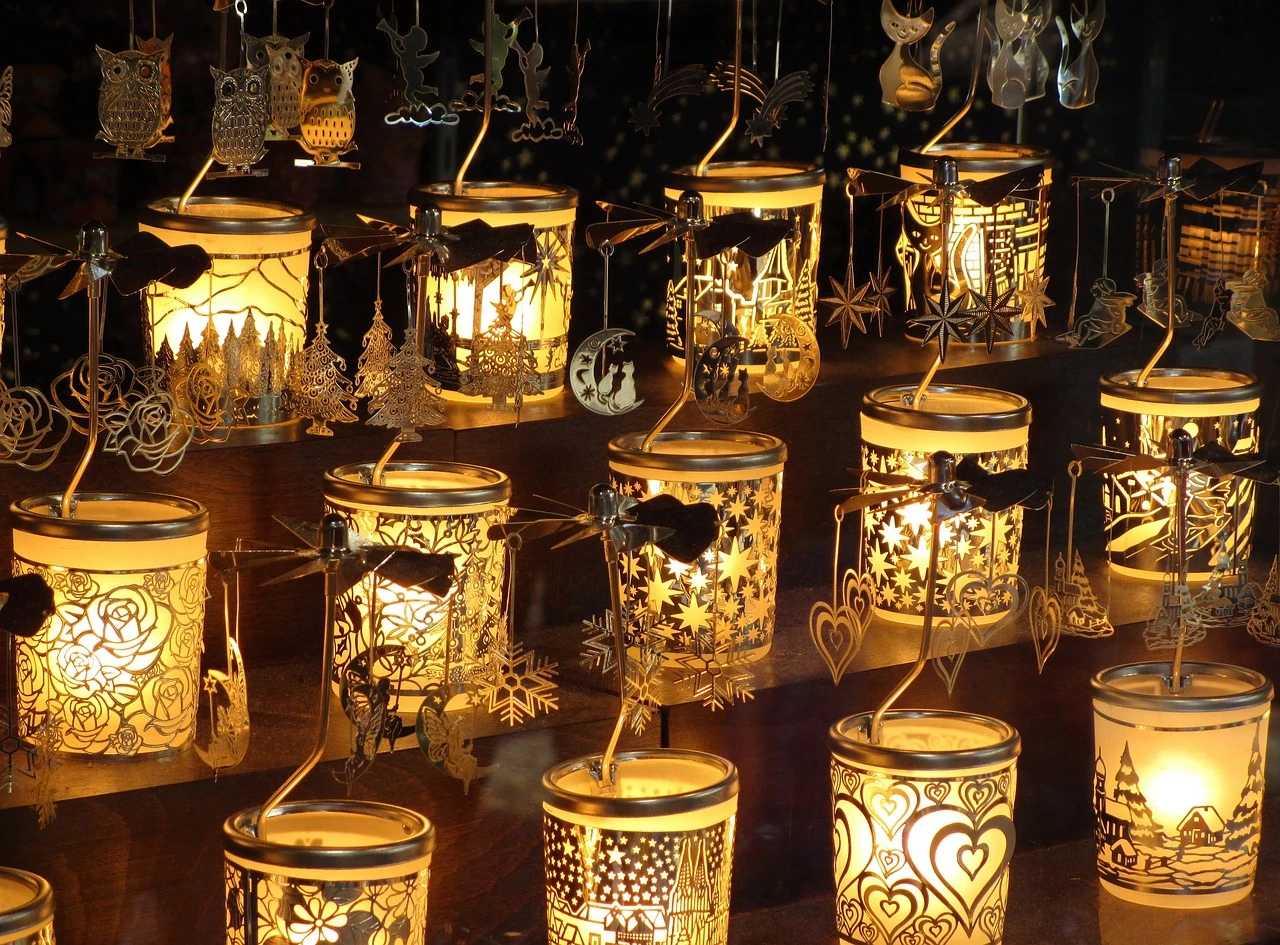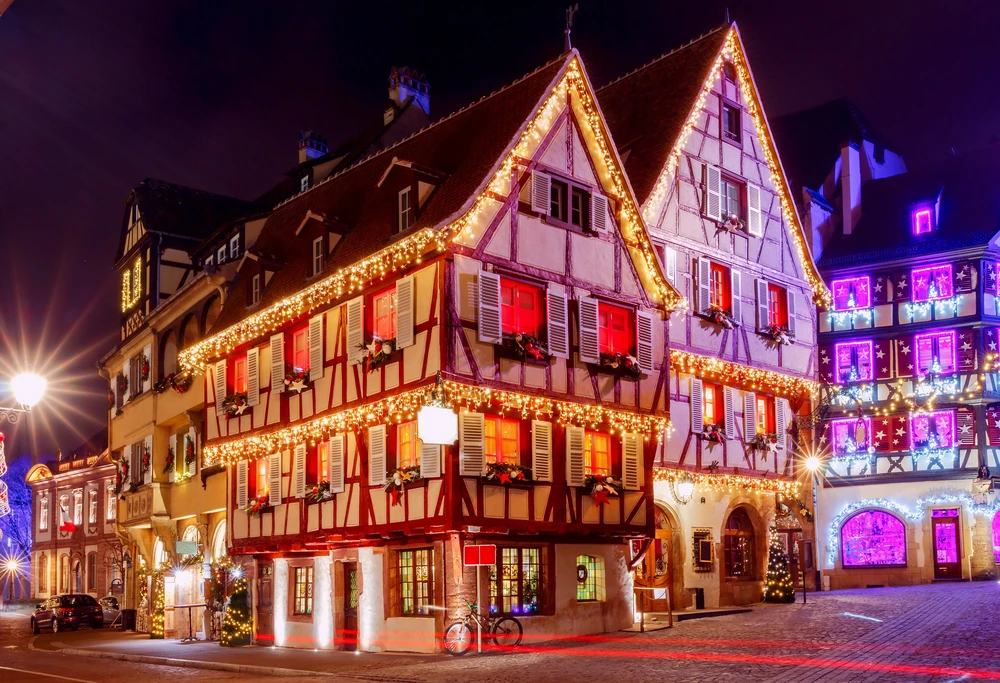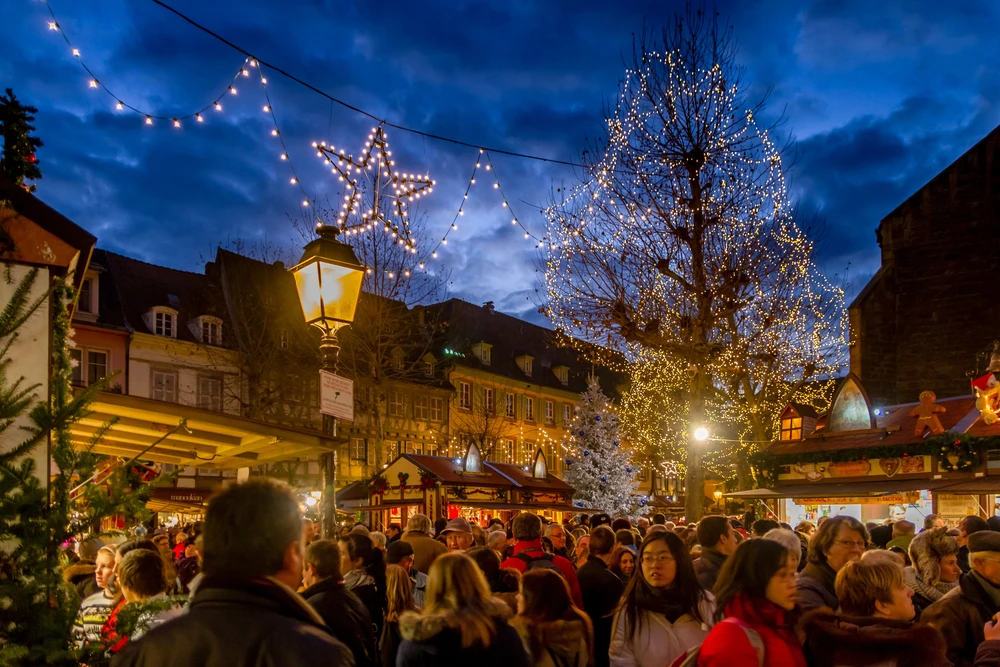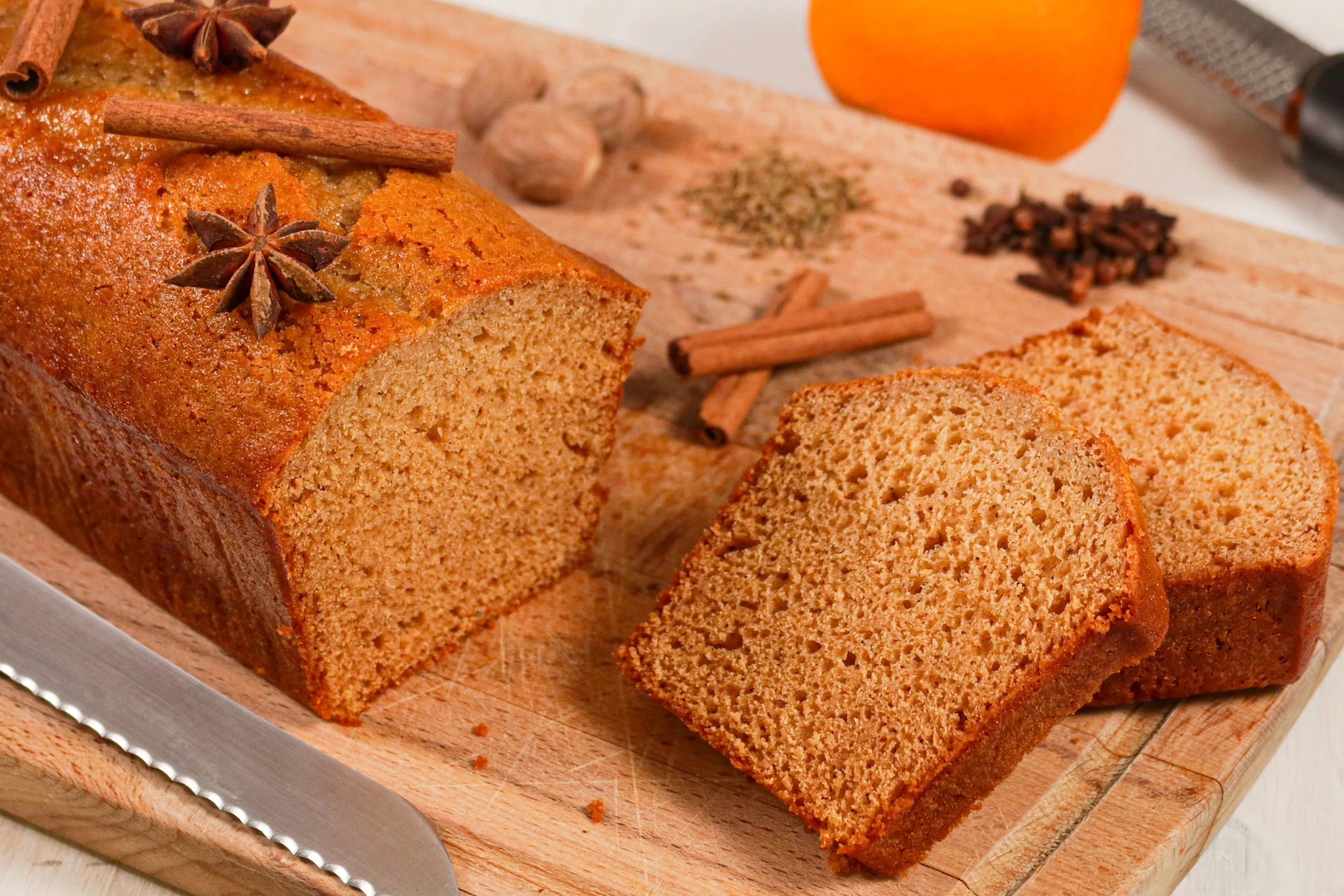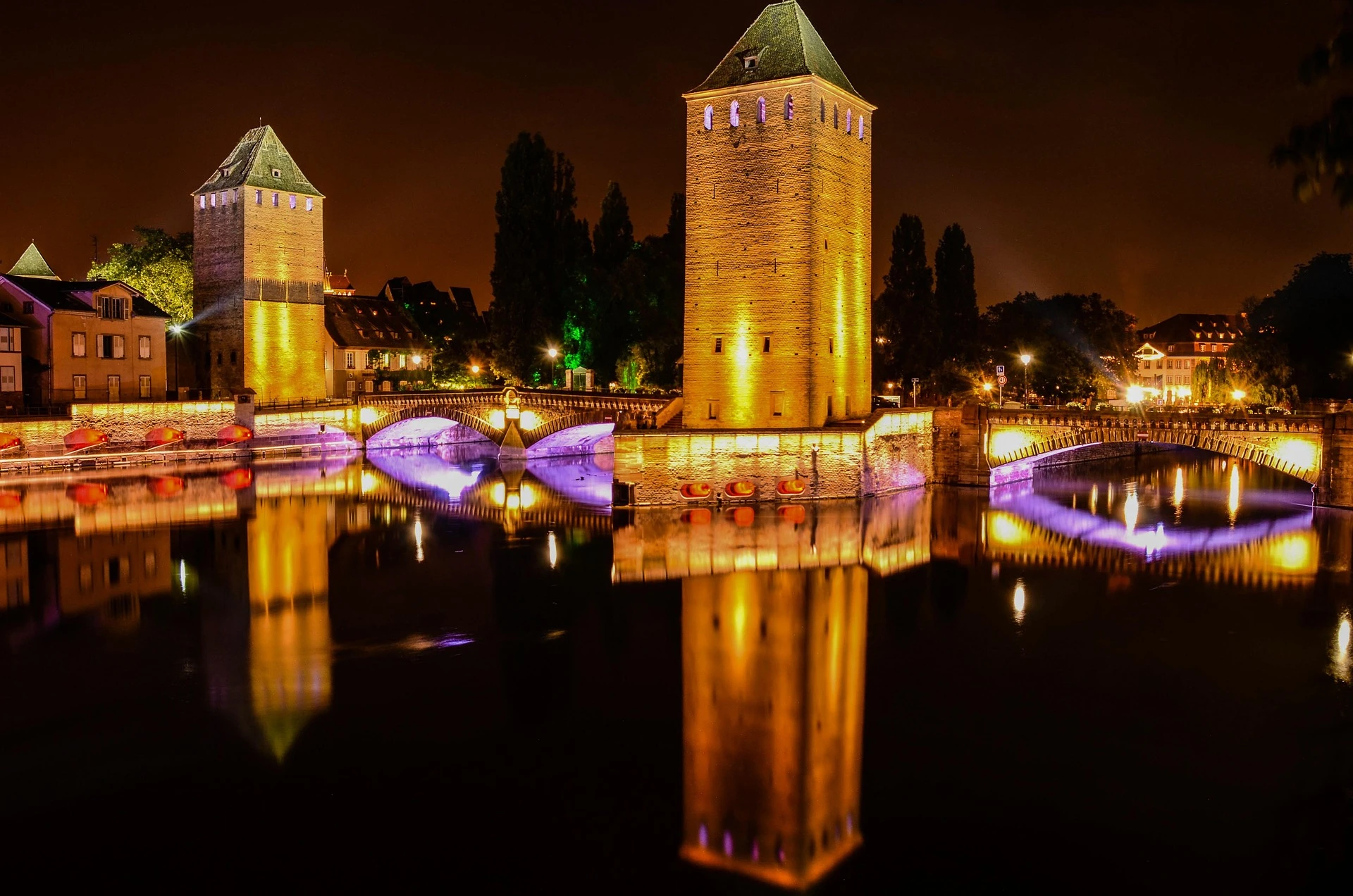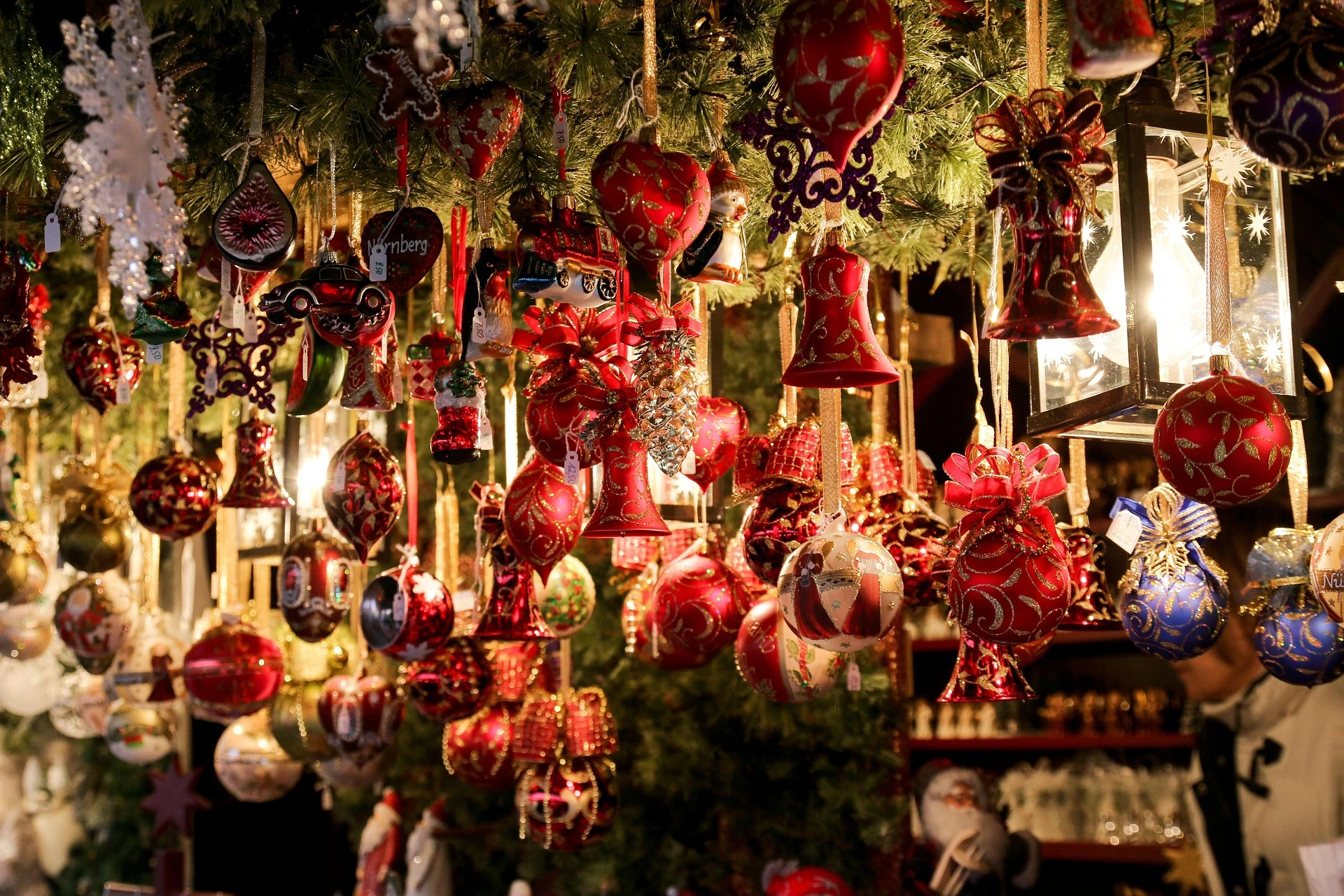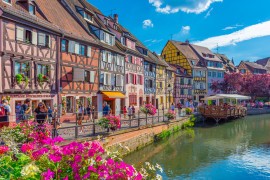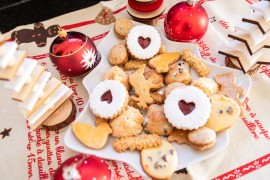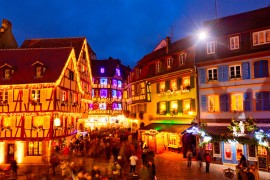🟩 Friday evening: immerse yourself in the Strasbourg Christmas market (Friday evening)
Arrive in Strasbourg late in the day, ideally around 6:30 pm, to experience the nightly Christmas magic. The big fir tree on the place Kléber, brought in every year from the forests of the Vosges, glows with a thousand lights. The alleyways around the Cathédrale Notre-Dame come alive with wooden chalets: this is the Christkindelsmärik, France's oldest Christmas market, established in 1570.
The air is fragrant with cinnamon, bredele and mulled wine. The lights reflect off the stained glass windows of the cathedral: the whole of Strasbourg seems to be singing Christmas carols.
💡 Photo tip: for a magical shot, position yourself on rue Mercière - the string lights frame the cathedral spire perfectly.
The rue mercière is illuminated it leads to Strasbourg Cathedral. Photo chosen by monsieurdefrance.com Phb.cz via depositphotos.com
🛏️ Where to stay in Strasbourg?
You can stay in the historic center to be close to the markets, or choose a quieter, more economical neighborhood on the outskirts thanks to the tram line A or D (Neudorf, Koenigshoffen, Cronenbourg) which links directly to the center.
🚆 Gare TGV station 10 minutes' walk from the center (Paris-Strasbourg: 1h50).
The famous Grand sapin on Place Kléber (it still comes from the Vosges mountains, right next door). Photo chosen by monsieurdefrance.com: ifeelstock via depositphotos.com
🟩 Saturday morning: visit Strasbourg and its Christmas markets
At dawn, Strasbourg reveals a different face. La Petite France, the former tanners' district, seems straight out of a fairy tale, with its half-timbered houses, bridges and canals. The smells of brioche and gingerbread waft from the bakeries.
Continue to the Ponts Couverts and then to the cathédrale, a Gothic masterpiece. Its rose window, astronomical clock and stained glass windows are spectacular in the morning light.
At 10:30 a.m., treat yourself to a visit to the Musée Alsacien (23 quai Saint-Nicolas): antique nativity scenes, traditional costumes and everyday objects plunge you into the Christmas spirit of yesteryear.
Alternatively, stay close to the cathedral and discover its gargoyles, 142-meter-high spire and panorama from its platform.
Strasbourg is also beautiful in daylight and without illuminations. Here little France / Photo chosen by monsieur de France: Image by Monika Neumann de Pixabay
🍽️ Lunch (12:30 pm - 2:00 pm)
For lunch, settle into a typical winstub and enjoy a good Alsatian dish while taking your time! For example, sauerkraut, baeckeoffe or tarte flambée. There are plenty of restaurants in town, the best known of which are:
-
Chez Yvonne, Strasbourg institution
-
Maison Kammerzell, at the foot of the cathedral
-
La Corde à Linge, convivial atmosphere
Choucroute garnie is traditionally enjoyed with a good Alsace white wine / Photo chosen by monsieur de France: fotek via depositphotos
🟧 Saturday afternoon: Christmas markets in Eguisheim and Riquewihr
Eguisheim is worth a visit / Photo chosen by Monsieur de France : Marina113 via depositphotos.
🚗 Strasbourg → Eguisheim: 1h15
Leave Strasbourg around 2.45 pm. The Alsace wine route unfolds its golden hills, bare vineyards and picturesque villages. At 4 pm, Eguisheim welcomes you: a circular village listed as one of the Plus Beaux Villages de France.
Pastel facades, dried geraniums in the windows, garlands and the bell tower are a perfect match. Eguisheim's Christmas market, intimate and warm, showcases local artisans: potters, glassmakers, bakers, winemakers.
The scents of mulled wine, orange and honey fill the cobbled streets. Here, Christmas is lived in calm and proximity.
Eguisheim is also very pretty in summer as you can see. Photo chosen by monsieurdefrance.com: Xantana via dépositphotos.com
🟧 Saturday late afternoon in Riquewihr
🚗 Eguisheim → Riquewihr : 20 min
At the end of the day, head for Riquewihr, a medieval gem nestled at the foot of the vineyards. The half-timbered facades look as if they've stepped straight out of a movie set. The ramparts light up, artisans offer spice breads, carved candles and blown glass decorations. Christmas melodies accompany the twilight: everything here exudes Alsatian authenticity. A mulled wine, a warm kougelhopf, and the magic happens.
A view of the Riquewihr Christmas market / Photo chosen by monsieurdefrance.com: Xantana via depositphotos.Com
🟧 Saturday evening: the magic of Colmar's Christmas markets
View of the Colmar Christmas market / Photo chosen by monsieurdefrance.com: Xantana via depositphotos.Com
🚗 Eguisheim → Colmar: 15 min
Arriving in Colmar at around 6pm, you enter a living postcard. The town is home to five Christmas markets, each with its own personality:
-
Place des Dominicains: nativity scenes and religious decorations.
-
Place Jeanne d'Arc: gastronomy and regional specialties.
-
Place de l'Ancienne Douane: arts and crafts.
-
Little Venice: a fairytale world for children.
-
Place de la Cathédrale: traditional atmosphere.
The canals reflect the lights, the songs soar, and it's easy to see why Colmar is often voted the most beautiful Christmas market in Europe.
The Colmar Christmas market is magnificent. Photo chosen by monsieurdefrance.com: aletheia97 via dépositphotos
🛏️ Where to sleep in Colmar?
Stay in Little Venice for charm, or near the station for convenience (access to shuttles and TER links).
🟩 Sunday morning: Colmar and its peaceful Christmas markets
The Unterlinden Museum and its famous altarpiece / Photo chosen by monsieurdefrance.com: Hackman via depositphotos
On Sunday mornings, the town slowly wakes up. Locals stroll to the covered market, where local produce is sampled: farmhouse cheeses, charcuterie, jams and Alsace wines.
The smells of cinnamon and hot sugar mingle with the music of still-sleeping cottages.
Art lovers will visit the Musée Unterlinden, home to the famous Retable d'Issenheim, a masterpiece from the XVIᵉ century. A peaceful place to take a cultural break in the middle of the party.
For those with a sweet tooth, Colmar's covered market is worth a visit from 10 a.m. to 2 p.m. on Sundays / Photo chosen by monsieurdefrance.com: depositphotos
🟧 Sunday afternoon: the authentic Christmas market in Kaysersberg
🚗 Colmar → Kaysersberg : 20 min
Leave around 3:30 pm to arrive at 4:00 pm in Kaysersberg, the ideal time to enjoy the market as night slowly settles in.
One of Kaysersberg's streets at Christmas:Photo chosen by monsieurdefrance.com : olesiabilkei via depositphotos.com
Leave Colmar around 3:30 p.m.; by 4 p.m., the light is fading and the mountains are taking shape. The Kaysersberg Christmas market opens in the cobbled streets and half-timbered houses.
Here, no industrial products: each chalet is run by a local artisan. Wood carvings, glass decorations, jams and handmade candles make up an ensemble of rare quality.
Christmas carols echo beneath the rooftops, mulled wine perfumes the air, and it's easy to see why Kaysersberg remains one of Alsace's best-loved markets.
💡 Don't miss the Christmas boutique open all year round, near rue du Général-de-Gaulle.
The streets of kayzersberg, which include the only Christmas store open all year round / Photo chosen by Monsieurdefrance.com: depositphotos
🟩 Return to Strasbourg
🚗 Kaysersberg → Strasbourg : 1h15
Get back on the road around 5:30 pm, arriving in Strasbourg around 7 pm.
A final detour to Place Kléber is a must: the big fir tree is still shining, a symbol of this weekend of light and sharing.
Mulled wine in hand, Christmas music in your ears, you leave with your heart full of Alsace.
Christmas markets are also a great place to find holiday decor. Photo chosen by monsieurdefrance.com: by moni quayle de Pixabay
🟨 Weekend summary (timetables + routes)
| Jour | Lieu | Schedule | 🚗 Distance / Time |
|---|---|---|---|
| Friday | Strasbourg (night market) | 6:30 p.m. – 9:30 p.m. | – |
| Samedi | Strasbourg (matin + midi) | 9h00 – 14h00 | – |
| Strasbourg → Eguisheim | Departure 2:45 p.m. | 🚗 1h15 | |
| Eguisheim (twilight) | 16h00 – 17h30 | 🚗 15 min → Colmar | |
| Colmar (evening) | 6:00 p.m. – 9:00 p.m. | – | |
| Sunday | Colmar (matin) | 9h30 – 12h30 | 🚗 20 min → Kaysersberg |
| Kaysersberg (4 p.m.) | 16h00 – 17h30 | 🚗 1 hour 15 minutes → Strasbourg | |
| Strasbourg (return) | 19h00 | – |
It's all about Alsace's famous Christmas markets
Alsace isn't just about markets: its villages and landscapes are also worth a detour. Less than an hour away, several sites ideally complete this weekend.
-
Obernai: a charming winegrowing town 30 minutes from Strasbourg, famous for its half-timbered facades and gourmet market.
-
Ribeauvillé: 15 min from Riquewihr, its medieval market (one of the only in France) features jugglers, troubadours and costumed craftsmen.
-
Turckheim: 10 min from Colmar, it hosts a living "advent" every evening: a giant calendar that comes to life on the facades.
-
Barr and Andlau: two typical villages in the Vosges foothills where you can discover Alsace cellars and crémants.
6 Practical tips for a Christmas market weekend in Alsace
A facade in Strasbourg during the holidays with teddy bears / Photo chosen by Monsieurdefrance.com: depositphotos
1 Dress warmly;
It's silly, but it's cold in December, especially in Alsace. Dress warmly, especially by taking well-warmed shoes. Plan for comfort because you'll be walking a lot, we're not at fashion week, the most important thing is to feel good in your clothes.
2 Choose evenings
Even if you have to sleep in or settle down in the morning, Christmas markets are always more beautiful in the evening. so stagger your visits during the day as much as possible, but don't neglect the journey time.
Colmar at dusk /Photo chosen by monsieurdefrance.com: depositphotos
3 Rent a car
If you don't want to do just the big cities like Strasbourg or Colmar, you'll need a car. You'll find them for hire in Strasbourg and Colmar. Be sure to reserve them well in advance because cars are in high demand at this time of year.
4 But take public transport often
Superb items can be found at Alsatian Christmas markets / Photo chosen by monsieur de France: depositphotos
If you're coming by carthe easiest way is to park outsideStrasbourg in a park-and-ride lot, you'll take the streetcar (it's convenient). Likewise in Colmar, a shuttle bus takes you to the city center from park-and-ride lots outside. You'll need your car to get to the villages;
5 and learn patience
Alsace's Christmas markets are so famous that they attract huge crowds. Sometimes you'll have to be patient, especially in the villages if you're coming by car to park your vehicle. That said, the atmosphere is warm and friendly, and even with lots of people, you'll get the most out of your stay!
It's always crowded but it always goes well / Photo chosen by Monsieur de France: depositphotos
6 Finally, be greedy!
We don't go to Christmas markets, and even more widely in Alsace, to diet. Please yourself! And enjoy, in particular, the famous Christmas cakes les bredeles. There's also always room for a good glass of mulled wine, flavored, even if we remind you that alcohol abuse is dangerous for your health, consume in moderation.
5 specialities to try when visiting Alsace's Christmas markets
Alsace's Christmas markets aren't just a festival of lights and carols, they're also a gourmet adventure. Here are five must-taste must-tries during your stay.
1. Spiced mulled wine
It's impossible to imagine a Christmas market without it! Alsatian mulled wine blends red wine, cinnamon, cloves, orange and sometimes a hint of honey. Served piping hot in a decorated goblet, it warms hands and hearts.
💡 Tip: also try vin chaud blanc, typically Alsatian, made with Riesling or Gewurztraminer.
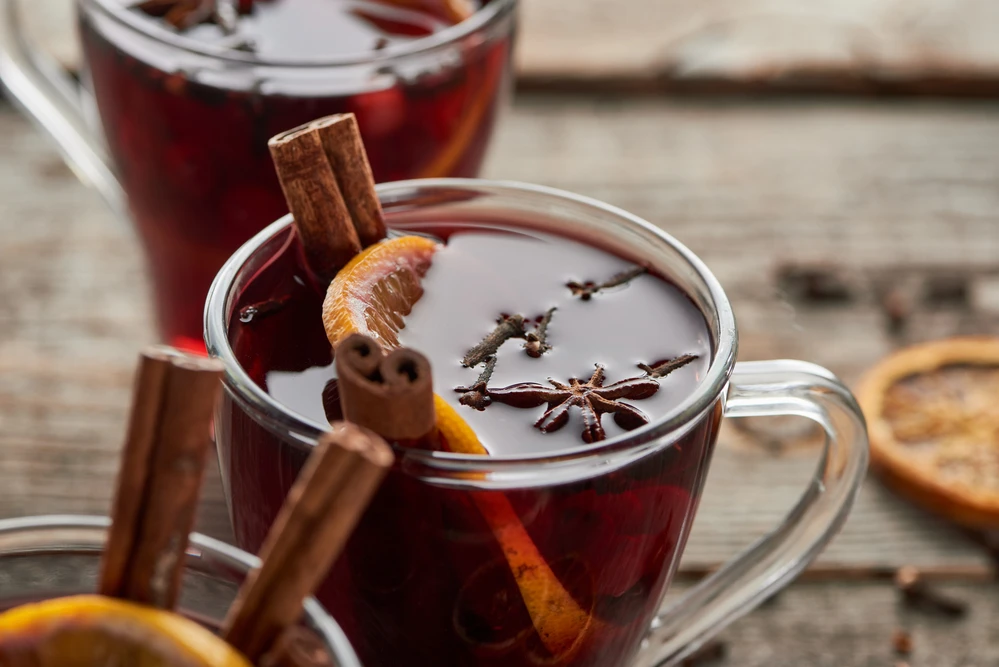
2. Bredeles, Christmas cakes
True emblems of Alsace's festive season, les bredeles (or bredele) come in dozens of recipes: cinnamon shortbread, spritz, iced stars, vanilla kipferl... Every family has its own, and every market offers its own colorful tins. Every family has its own, and every market offers its own colorful boxes.
These sweet treats can be enjoyed at any time with a cup of coffee, or offered beautifully wrapped.
Alsatian Christmas cakes. Photo chosen by monsieurdefrance.com: depositphotos
3. Tarte flambée (Flammekueche)
Even in winter, Alsatians love their flammekueche: a thin pastry topped with cream, onions and bacon, cooked over a high heat. Crisp, golden and melting at the same time, it's easy to share around a high table on the market.
🍷 Perfect pairing: a glass of pinot blanc or Alsace crémant.
4. Christmas gingerbread
Soft, fragrant and often heart- or star-shaped, gingerbread is another star of the chalets. Made in Gertwiller, the gingerbread capital, it exudes honey, cinnamon, anise and nutmeg. Some artisans decorate it by hand: an ideal gift to take home.
5. Sauerkraut and its festive variants
Christmas markets are also an opportunity to savor Alsatian sauerkraut, served in heated stands or winstubs. In its "festive" version, it's accompanied by jarret, knack, smoked palette, potatoes and white wine. A generous dish, a symbol of conviviality and sharing.
💡 Gourmet bonus: don't forget to try the manneles, the little brioche men served on December 6 for St. Nicholas Day.
FAQ - Alsace Christmas markets for foreign visitors
When do the Christmas markets in Alsace begin and end?
Most Christmas markets in Alsace open end of November, often on the last weekend of the month, and continue until Christmas. Some, like those in Colmar or Strasbourg, stay open until the end of December. Exact dates change every year: always check the official city website before your visit.
What are the market opening times?
In general, chalets open around 11 am and close between 7 pm and 9 pm depending on the day and the town. In Strasbourg, for example, the market is often open from 11:30 am to 9 pm, with reduced hours on December 24. In Colmar, it closes around 20 h on weekdays and later on weekends.
➡️ The best time to visit? After 5 pm, when night falls: the illuminations transform the streets and facades into a veritable wonderland. This is when the Christmas atmosphere is at its most fairy.
Strasbourg at Christmas: image chosen by Monsieur de France: by Cuong DUONG Viet de Pixabay
Which cities are not to be missed?
The most famous are :
-
Strasbourg, the "Christmas Capital", with several markets throughout the historic center.
-
Colmar, a fairytale setting with six themed markets.
-
Kaysersberg, very typical and artisanal.
-
Riquewihr and Eguisheim, two splendid medieval villages at Christmas.
-
Mulhouse and Obernai, also popular for their illuminations and ambience.
-
How long does it take to get the most out of it?
A weekend (2 full days and an evening) is already enough to experience the Alsatian Christmas magic. If you want to visit several villages, 3 to 4 days are ideal. The ideal is to choose a base point, such as Strasbourg or Colmar, to radiate easily.
How do you get between markets?
-
By regional train (TER): convenient between major cities, for example Strasbourg-Colmar takes around 30 minutes.
-
By rental car: useful for small villages not served by train.
-
By Christmas shuttles: some destinations offer special buses linking nearby markets.
Remember to park your car in outdoor parking lots: historic centers are often pedestrianized during the holidays.
Always spectacular: Strasbourg's blue tree / Photo chosen by monsieurdefrance.com: pixabay.
What's the weather like and what should I wear?
The Alsatian winter is cold but magical: temperatures between 0 and 5 °C on average. Wear warm layers, a coat, a scarf, a hat, and above all comfortable, waterproof shoes, as the cobblestones can get wet.
And don't forget your gloves to hold your goblet of mulled wine!
What can you taste at the markets?
Christmas markets are a festival of flavors! A must-try:
-
The vin chaud, often based on white wine in Alsace.
-
The bredele, small Christmas cookies with spices or hazelnuts.
-
The tarte flambée and hot bretzels.
-
The pain d'épices, the foie gras, the charcuteries locales.
-
And the Alsatian pastries, perfect with hot chocolate.
You'll find plenty of Christmas decorations/ Photo chosen by monsieur de France : by G.C. de Pixabay
Can I pay by card or do I need cash?
Credit cards are often accepted in the larger towns, but many small artisans prefer cash payments. It is therefore advisable to prepare some cash (in euros) before arriving at the smaller markets.
Do Alsatians speak English?
In Strasbourg and Colmar, many shopkeepers speak English or German. In the smaller villages, French remains the majority language. Learning a few polite words in French is always appreciated: bonjour, merci, au revoir.
Are Christmas markets safe?
Yes, Alsace's markets are very safe and well-monitored, but also very crowded, especially on weekends. Avoid the rush hours if you want to stroll quietly, keep your belongings close to you, and enjoy the atmosphere in complete serenity.
When evening comes, when the lights come on and the Christmas carols ring out, the atmosphere is simply enchanted.
Illustration photo: depositphotos

